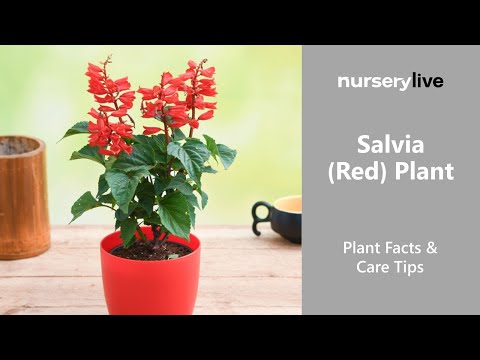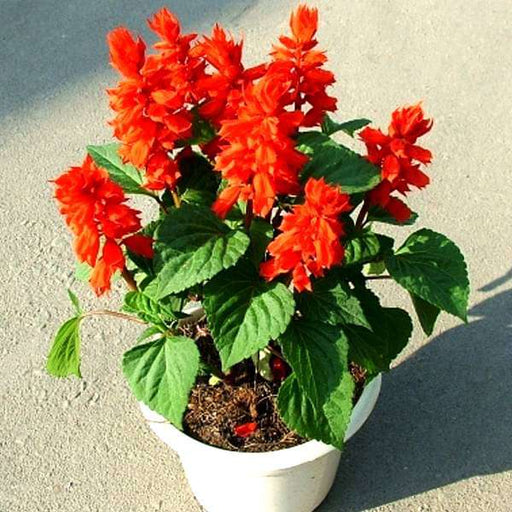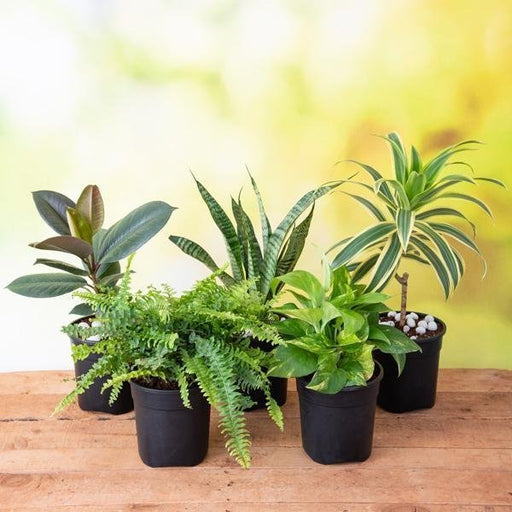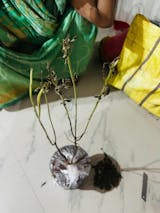Types of Salvia Plants
There are over 900 species of Salvia plants, each with its own unique characteristics and growing requirements. From culinary sage to ornamental varieties, understanding the different types can help you choose the best plants for your garden.
Planting Salvia Plants
Planting Salvia plants requires attention to soil preparation, spacing, and planting depth. With proper planting techniques, your Salvia plants will have a strong foundation for healthy growth.
Salvia Plant Care
Salvia plants require consistent care and attention to thrive, including watering, fertilizing, pruning, and pest control. Understanding the specific needs of your Salvia plants can help you keep them healthy and beautiful.
Salvia Plant Pruning
Pruning Salvia plants is an important part of their care, helping to promote healthy growth and shape the plant. Understanding the different types of pruning and when to perform them can help you maintain beautiful, healthy Salvia plants.
Salvia Plant Diseases
Salvia plants can be susceptible to a variety of diseases, including powdery mildew and fungal leaf spot. Understanding the signs of disease and taking appropriate preventive measures can help keep your Salvia plants healthy.
Salvia Plant Pests
Salvia plants can also be affected by a variety of pests, including aphids and spider mites. Understanding the signs of pest infestation and using appropriate pest control methods can help protect your Salvia plants.
Salvia Plant Fertilizer
Fertilizing Salvia plants is an important part of their care, providing the necessary nutrients for healthy growth and blooms. Understanding the different types of fertilizer and when to apply them can help you keep your Salvia plants healthy and beautiful.
Growing Salvia in Containers
Salvia plants can be grown successfully in containers, making them a great choice for small gardens or balconies. Understanding the specific requirements for growing Salvia in containers can help you create a beautiful display.
Salvia Plant Watering
Proper watering is essential for the health of Salvia plants. Understanding the specific water requirements for your Salvia plants and how to water them properly can help keep them healthy and beautiful.
Salvia Plant Propagation
Salvia plants can be propagated through a variety of methods, including stem cuttings and seed propagation. Understanding the different methods can help you propagate your own Salvia plants.
Salvia Plant Companions
Growing Salvia with companion plants can help enhance their beauty and health. Understanding the best companion plants for Salvia can help you create a beautiful and diverse garden.
Salvia Plant Winter Care
Proper winter care is essential for the health of Salvia plants. Understanding the specific winter care requirements for your Salvia plants can help you protect them from cold and frost damage.
Salvia Plant Fragrance
Some Salvia varieties have a fragrant scent, adding an extra level of enjoyment to your garden. Understanding the different types of fragrant Salvia plants and how to care for them can help you create a beautiful and aromatic garden.
Salvia Plant Colors
Salvia plants come in a range of colors, from deep blues and purples to bright pinks and reds. Understanding the different color options can help you choose the perfect Salvia plants for your garden.
Salvia Plant Sun Requirements
Salvia plants require plenty of sunlight to thrive, but different varieties have different sun requirements. Understanding the specific sun requirements for your Salvia plants can help you choose the best location for planting.
Salvia Plant Soil Requirements
Salvia plants require well-draining soil with plenty of organic matter. Understanding the specific soil requirements for your Salvia plants can help you prepare the soil for healthy growth.
Salvia Plant Uses
Salvia plants have a variety of uses beyond their ornamental beauty, including culinary and medicinal uses. Understanding the different uses of Salvia plants can help you appreciate their value and versatility.
Salvia Plant Varieties for Pollinators
Some Salvia plant varieties are especially attractive to pollinators like bees and butterflies, making them a great addition to pollinator gardens. Understanding the best Salvia plant varieties for pollinators can help you create a vibrant and healthy garden ecosystem.
Salvia Plant Varieties for Shade
While Salvia plants require plenty of sunlight to thrive, some varieties are better suited for partial shade conditions. Understanding the best Salvia plant varieties for shade can help you create a beautiful and healthy garden in shadier areas.
Salvia Plant Varieties for Drought-Tolerant Landscaping
Salvia plants are often used in drought-tolerant landscaping due to their ability to thrive in hot and dry conditions. Understanding the best Salvia plant varieties for drought-tolerant landscaping can help you create a beautiful and sustainable garden that conserves water.
Salvia Plant Varieties for Cut Flowers
Salvia plants can make beautiful cut flowers, adding color and fragrance to indoor arrangements. Understanding the best Salvia plant varieties for cut flowers can help you create stunning floral displays.
Salvia Plant Varieties for Border Plantings
Salvia plants can be used effectively in border plantings, adding color and texture to garden edges. Understanding the best Salvia plant varieties for border plantings can help you create a beautiful and cohesive garden design.
Salvia Plant Varieties for Rock Gardens
Salvia plants can thrive in rocky or gravelly soil, making them a great choice for rock gardens. Understanding the best Salvia plant varieties for rock gardens can help you create a beautiful and low-maintenance garden that complements your home's architecture.
Salvia Plant Varieties for Hummingbirds
Hummingbirds are attracted to the nectar-rich blooms of many Salvia plant varieties, making them a great addition to hummingbird gardens. Understanding the best Salvia plant varieties for hummingbirds can help you create a garden that is both beautiful and beneficial to wildlife.
Salvia Plant Varieties for Butterfly Gardens
Butterflies are also attracted to the nectar-rich blooms of Salvia plants, making them a great addition to butterfly gardens. Understanding the best Salvia plant varieties for butterfly gardens can help you create a beautiful and healthy ecosystem for butterflies and other pollinators.
Salvia Plant Varieties for Cottage Gardens
Salvia plants can be a great addition to cottage gardens, adding color and texture to informal garden designs. Understanding the best Salvia plant varieties for cottage gardens can help you create a charming and welcoming garden space.
Salvia Plant Varieties for Medicinal Uses
Some Salvia plant varieties have medicinal properties, making them a valuable addition to herbal medicine gardens. Understanding the specific medicinal uses of Salvia plants can help you create a garden that is not only beautiful but also has practical value.
Salvia Plant Varieties for Culinary Uses
Some Salvia plant varieties are used in cooking, adding flavor and aroma to dishes. Understanding the specific culinary uses of Salvia plants can help you create a garden that is both beautiful and useful in the kitchen.
Salvia Plant Varieties for Aromatherapy
Some Salvia plant varieties are used in aromatherapy, providing relaxing and therapeutic benefits. Understanding the specific aromatherapy uses of Salvia plants can help you create a garden that not only looks and smells beautiful but also promotes wellness and relaxation.
Salvia Plant Varieties for Attracting Bees
Bees are essential pollinators for many plants




















































